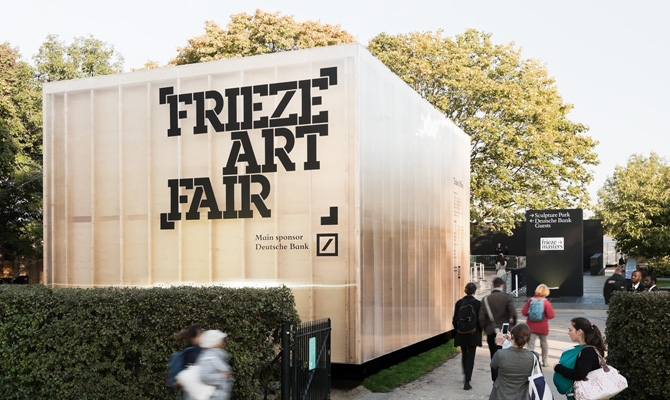Frieze: Has the Opportunity to Sell, Brought Art to the People?
Art. The word, for some, can muster up connotations of formal galleries and stuffy museums. And even contemporary art has become somewhat connected with ideas of impersonality and over-intellectualism.
However, since 2003, Frieze London has gained a reputation as somewhere where art is presented in such a way that everyone can enjoy it, somewhere that's welcoming and engaging.
But there's a paradox here.

Frieze was originally set up as – and still officially claims to be – exclusively a platform to facilitate the buying and selling of art, whereas galleries and museums are places where art is solely displayed for public viewing.
So how has Frieze managed to gain this convivial, inviting reputation, when so many others, perhaps better placed, have failed? In fact, statistics show that 80 percent of those attending Frieze, which this year sold out in advance, did so exclusively to view art, with only the remaining 20 percent actually planning on making a purchase.
Surely part of it is that, as a market, Frieze doesn't have a single curator overseeing which art is displayed and how. Instead, artists and dealers bring their own wares and display them according to their own tastes – and with the opportunity to make sales, the displays become more and more elaborate, more and more beautiful.
It's an odd thought, but perhaps Frieze has managed to generate so much public interest because that was never its primary objective. People are attracted to creativity and excitement, and maybe simply allowing those producing or selling art to display it as they see fit is enough to get people involved.
Is Frieze's success simply a by-product of its commercial objectives? Let us know your thoughts.
